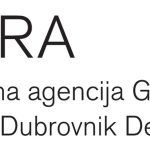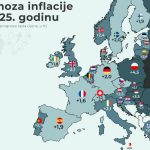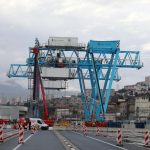TCN meets Niksa Vlahusic of DURA and discusses what can be, what can’t be, and everything in between regarding the City of Dubrovnik.
The City of Dubrovnik Development Agency DURA ltd. is a professional and non-profit organisation established by the City of Dubrovnik in 2010. The primary aim of the organisation is to prepare and implement projects financed by EU and other funds. DURA offers individual advisory services for the preparation of projects in regard to tourism, SME’s, civil society, culture, energy efficiency, sustainable mobility and the protection of the environment. The Agency represents a union between the city and other institutions and organisations relevant to sustainable local development. We talked to Niksa, a Smart City Strategist at DURA, to find out what happens with all the great ideas DURA would like to bring to fruition and how hard the process of implementing new solutions to the existing problems in Dubrovnik is.
Niksa, can you tell us more about your title? What does a Smart City Strategist’s job entail?
I work at the City of Dubrovnik Development Agency (DURA) which is a city company in charge of applications for EU funding. DURA serves as a link between city departments, the private sector – supporting development of entrepreneurship and civil society. My job mostly revolves around the coordination and implementation of multiple Smart City projects in the City of Dubrovnik. The Dubrovnik City Council adopted a document “Smart city strategy for the City of Dubrovnik” which contains the current state analysis of the ICT development level of the city’s infrastructure and services. Another part of the strategy explains the ideas or concepts of available solutions to solve some of the issues that were detected. What I have to do is to connect local and international companies with various city departments and match the requirements as defined by the strategy. If I manage to get some financing from EU projects that’s always a plus, however EU funds were not designed to be a main source of financing for important development projects.
What do you think about Dubrovnik as a smart city – is it developed in that regard? Does Dubrovnik take the lead in applying the smart city strategies in Croatia or is there still a lot more work to be done in this field?
Dubrovnik is definitely one of the regional leaders in Smart City development, however on a global level, we are lagging behind a lot. The only good thing in this race is that everyone, including Dubrovnik, can still catch up! Technology is changing really fast, as do the citizens’ needs, cities just need to adapt to both and do it as soon as possible. It is never really too late to make something more efficient, but the truth is there is a lot that should have been done already, alas, it has not been. The basic infrastructure is underdeveloped. The electrical grid, water grid, sewers, telecommunications, roads and a lot of other services are barely supplying the needs of the citizens and are constantly reaching their maximum capacities.
You currently work at the City of Dubrovnik Development Development Agency (DURA). The organisation has been praised on numerous occasions for its activities, innovative measures and suggestions for the City of Dubrovnik. What would you point out as the biggest obstacle(s) in your field, or for the Smart City initiatives specifically?
There are two factors that significantly endanger development projects in general within the city; exclusive focus on the tourism industry within the private sector and political instability of the city government. Not having a city budget basically stops most development projects. Without meeting some of these basic requirements, all large scale development projects will unfortunately be unattainable.
How much interest do public and private companies show in DURA’s work?
It all depends, during the past few years we’ve witnessed the full spectrum of professional behavior. Some of the public companies understand the need for development and are constantly investing in piloting new ideas, while some don’t even understand the problems they experience in day to day operations. Private companies are similar in the way that some understand the business process, project management and are interested in long-term cooperative projects, whereas other mostly larger international companies are usually focused on profit or marketing value while not providing required flexible solutions that the city needs.
In your opinion, what new Smart City measures would prompt better management of the problems with the mass tourism the Old Town of Dubrovnik is facing? People in Dubrovnik often complain about the traffic, particularly about the access roads to the city. What ideas would we need to implement, and what are we missing here: The political will or money? Or is it just a lack of innovative approach?
One of the aspects enveloped by the Smart City concept is traffic or sustainable mobility to be exact. In this case the right solution would be a centralised mobility centre. One location with the right equipment for monitoring and traffic management. We already have cameras placed on most intersections in the city. The people counter system for the historic city core will soon materialise, while the island of Lokrum is adopting similar technologies for the same purpose – the monitoring and the management of visitors. Sanitat (city parking company) is piloting smart parking sensors to provide information about parking availability to all citizens and visitors, shortening the time drivers need to spend in search for parking spaces. Up to 40% of driving time is actually time you spend searching for parking. An important part is the integration of all those services under one system – the Smart City platform. From this unified platform, the city can easily extract the data needed for different uses –traffic and tourism are a priority of course and that’s something we can see in strategy too. The opinion of citizens was an important element during the writing, so there is great correlation between what people perceive as the most important problems in the city and the priorities within the strategy itself. ”What’s missing?” is a good question to ask right now. We tested a lot of pilot schemes but there is a problem when it comes to scaling up the projects. The city is afraid to go forward. There is no political will to invest enough funds to upscale any project nor to pilot the solutions properly. The same applies to the operational bodies of the city government. All layers of the city are influenced by political instability which makes any planning and long term investment impossible. The risk to commit to any project is just too high and the same problem then extends to the private sector. This is all fine and it is a part of democratic process, however, there is no technology in the world that can help us if we are unwilling to use it. In my opinion, we should limit the total number of tourists allowed to enter Dubrovnik during the summer months based on the carrying capacity which needs to be calculated. We can accommodate more people if we organise everything more efficiently but we still won’t be able to accommodate everybody. The City Council should make the final decisions and policies about this matter, primarily keeping in mind the safety of people and the preservation of cultural heritage.








